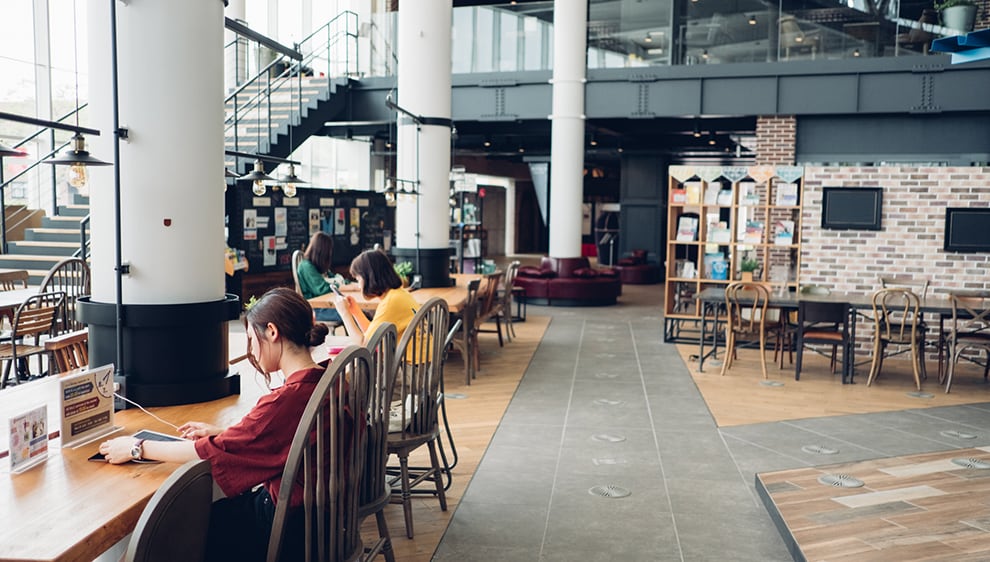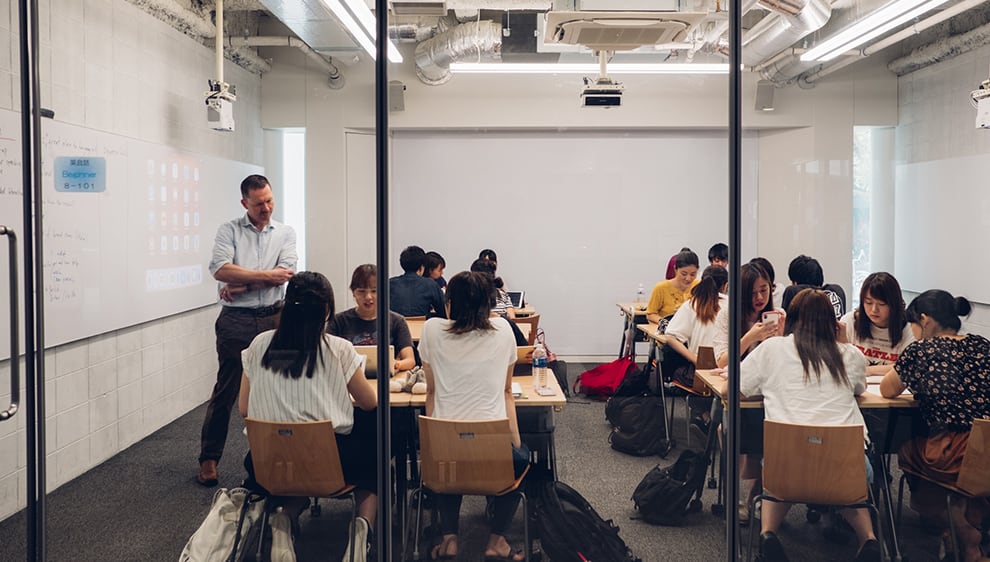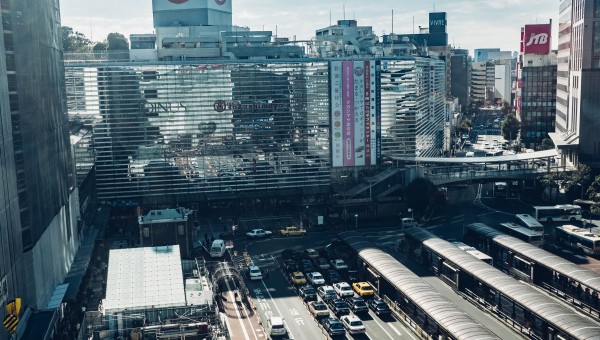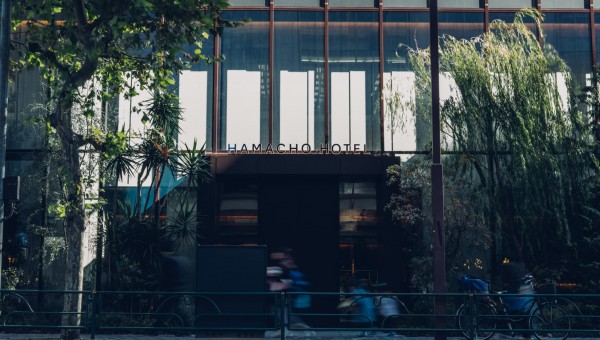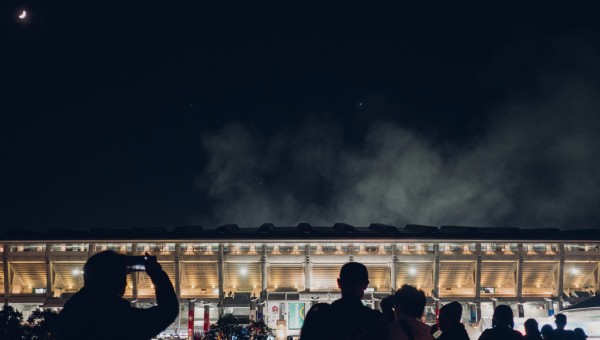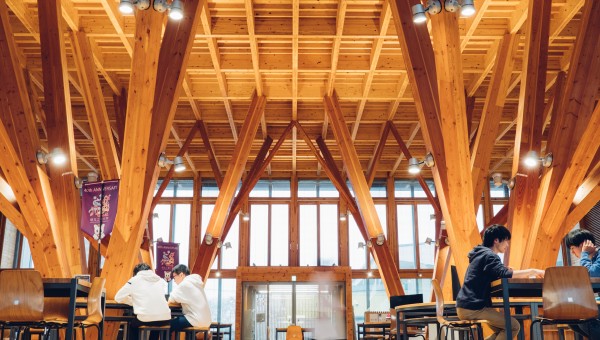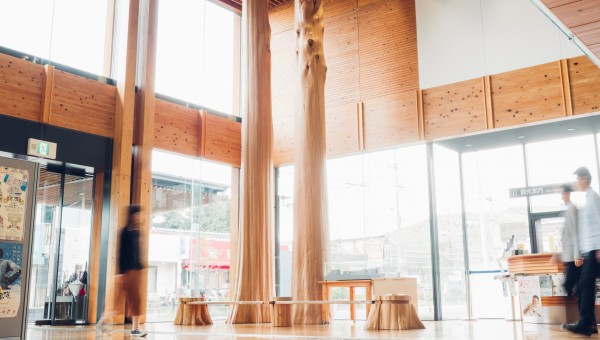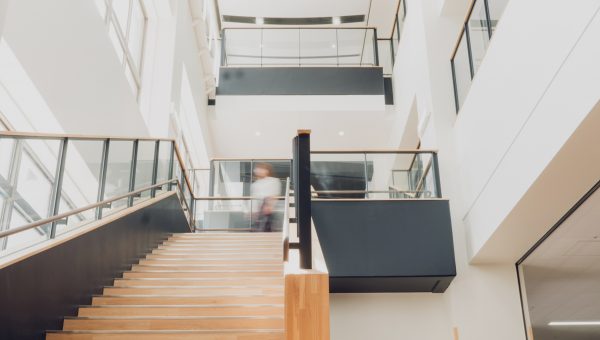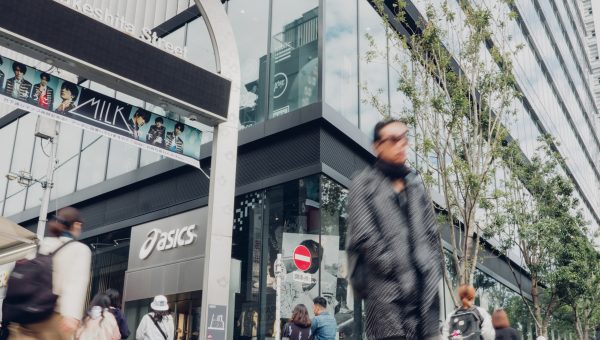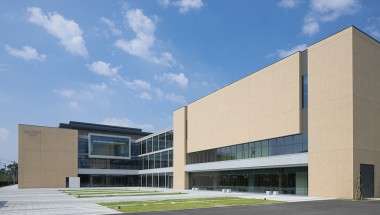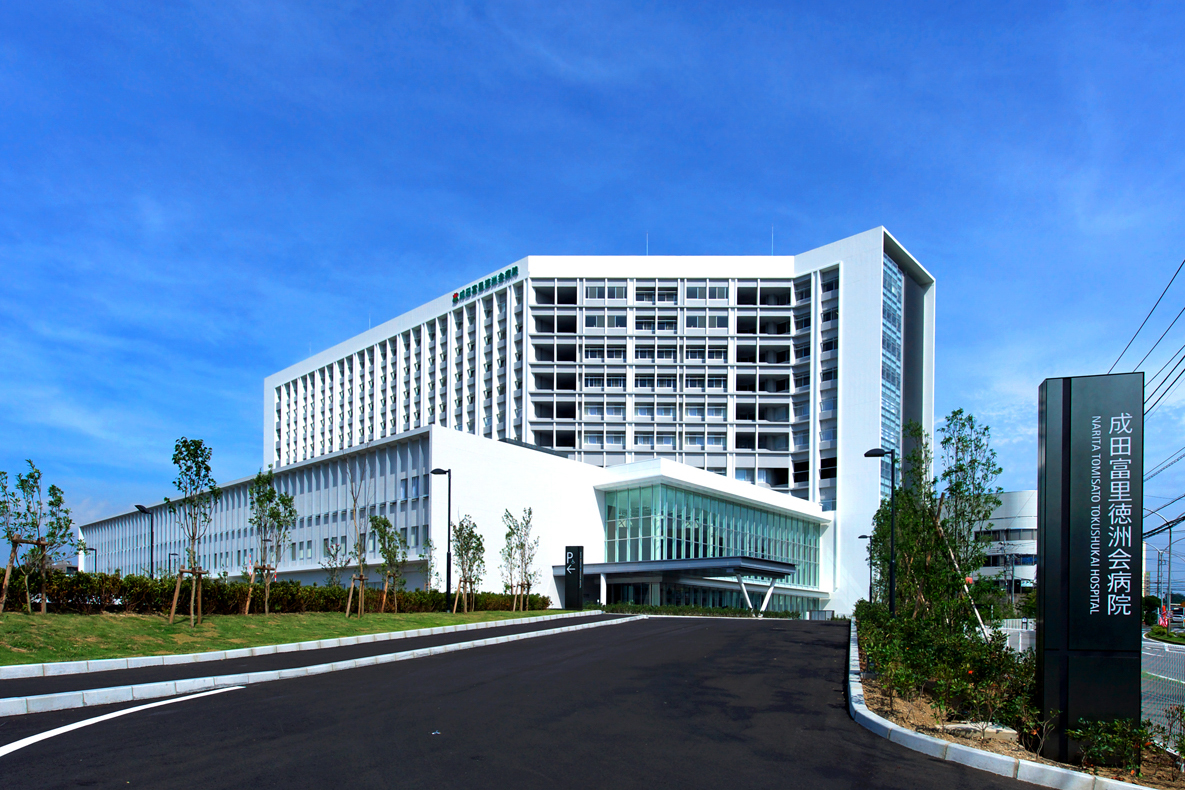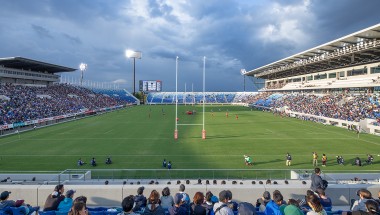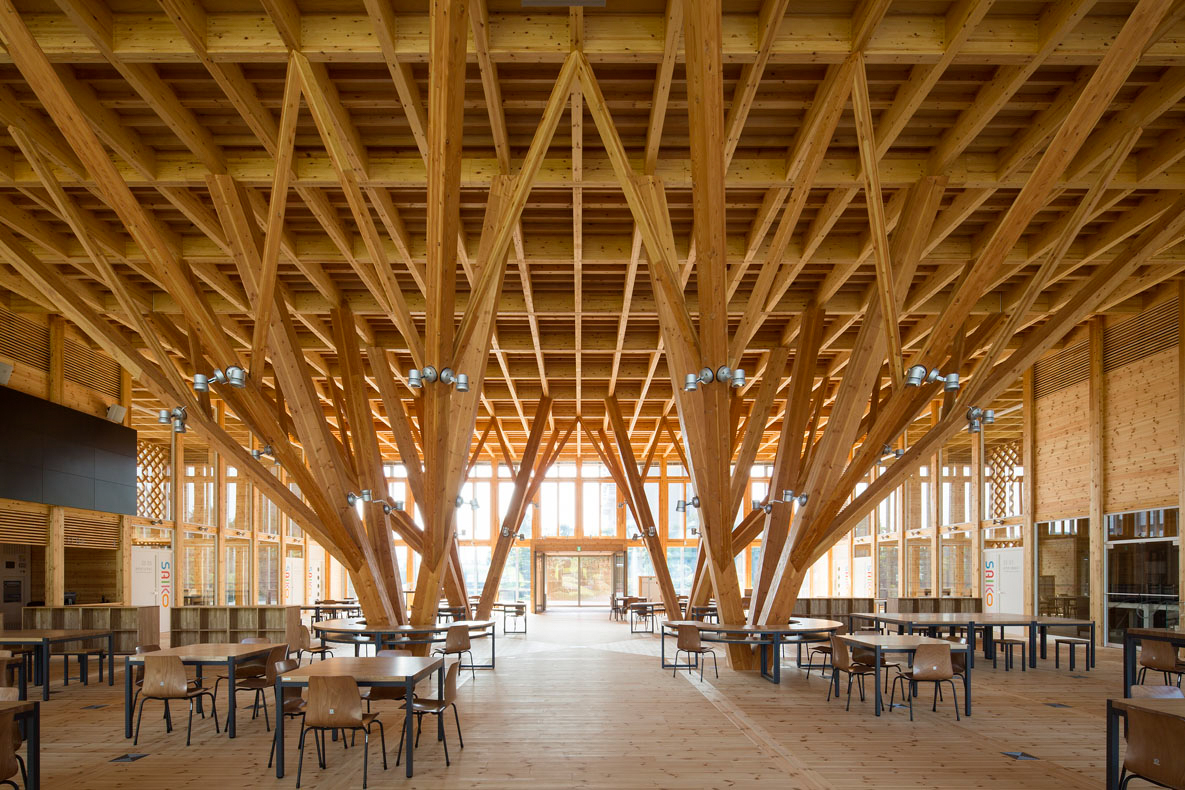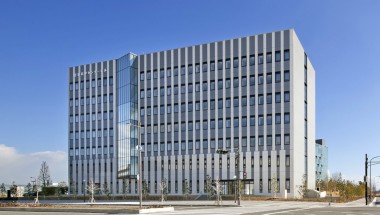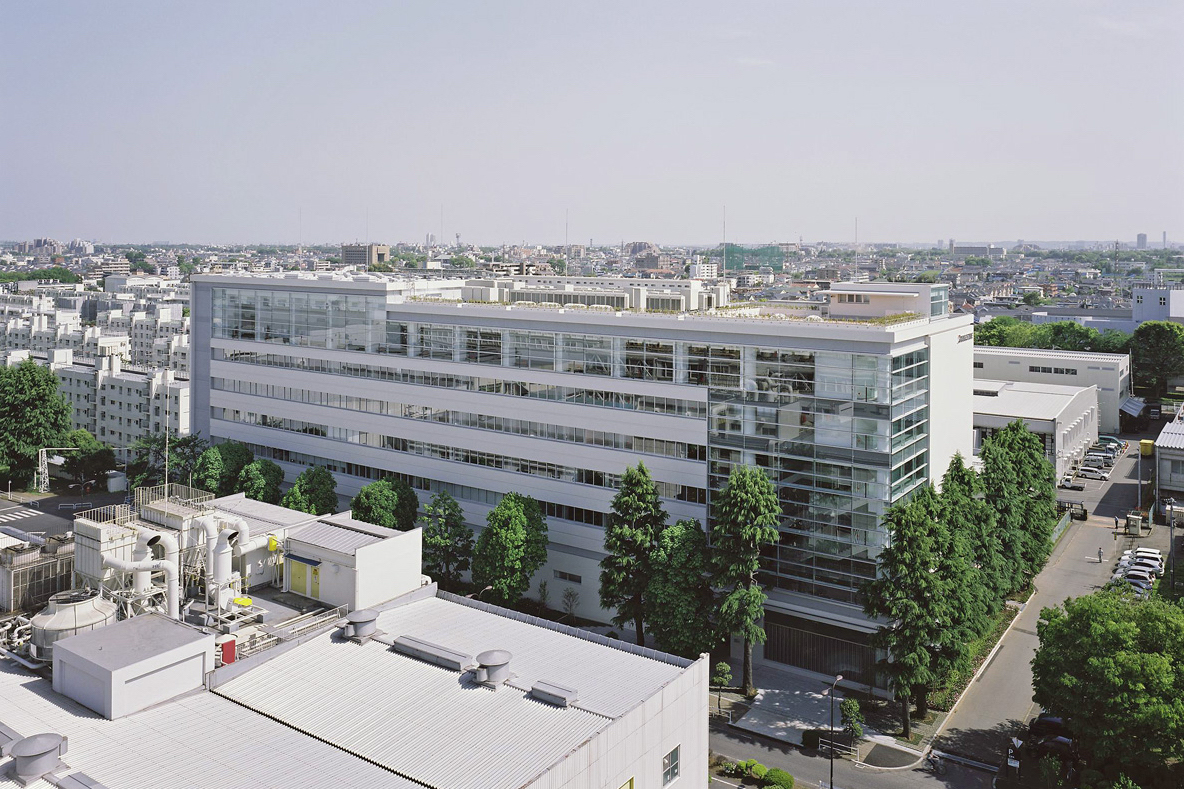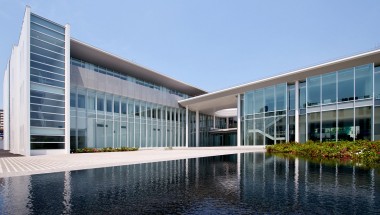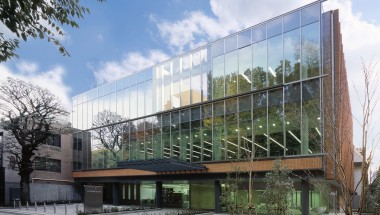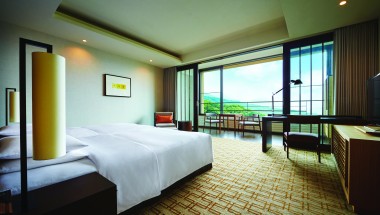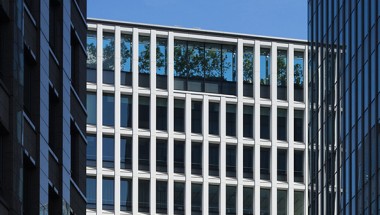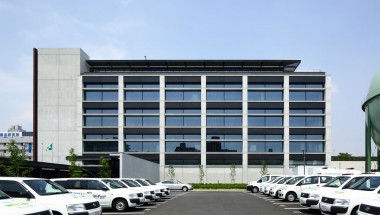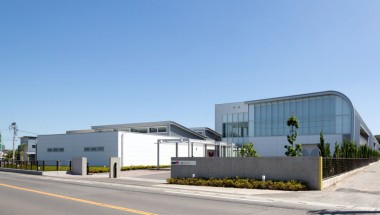Building 8 of the Kanda University of International Studies is locally referred to as “KUIS 8.”
It represents the next-generation version of the Self-Access Learning Center (SALC), a self-guided learning facility that the university has championed.
We look at some of the charms of this building, drawing on feedback from users and stakeholders involved with KUIS 8.
The space is so pleasant to use that more students are now pursuing self-guided study.
This area was formerly a manicured sports ground, but the creation of KUIS 8 has transformed it into a place thronging with activity. Many students come to use the facility every day. With SALC, we adopted a more serious and simple tone, but this building is, as you can see, more about conveying a friendly attitude. We wanted to make it a place that felt inviting to one and all.
I also work at the main desk at SALC, so I am almost always here outside of class hours. There are various spaces or zones within the building that let you choose where to study depending on your mood, which is a nice plus. You could intensively focus and study, or perhaps have an English language chat group to brush up on your speaking skills. It’s quite a welcome luxury to be able to choose where to work depending on what you intend to do. My favorite part is the English Lounge on the second floor, which imposes a policy of “English only.”
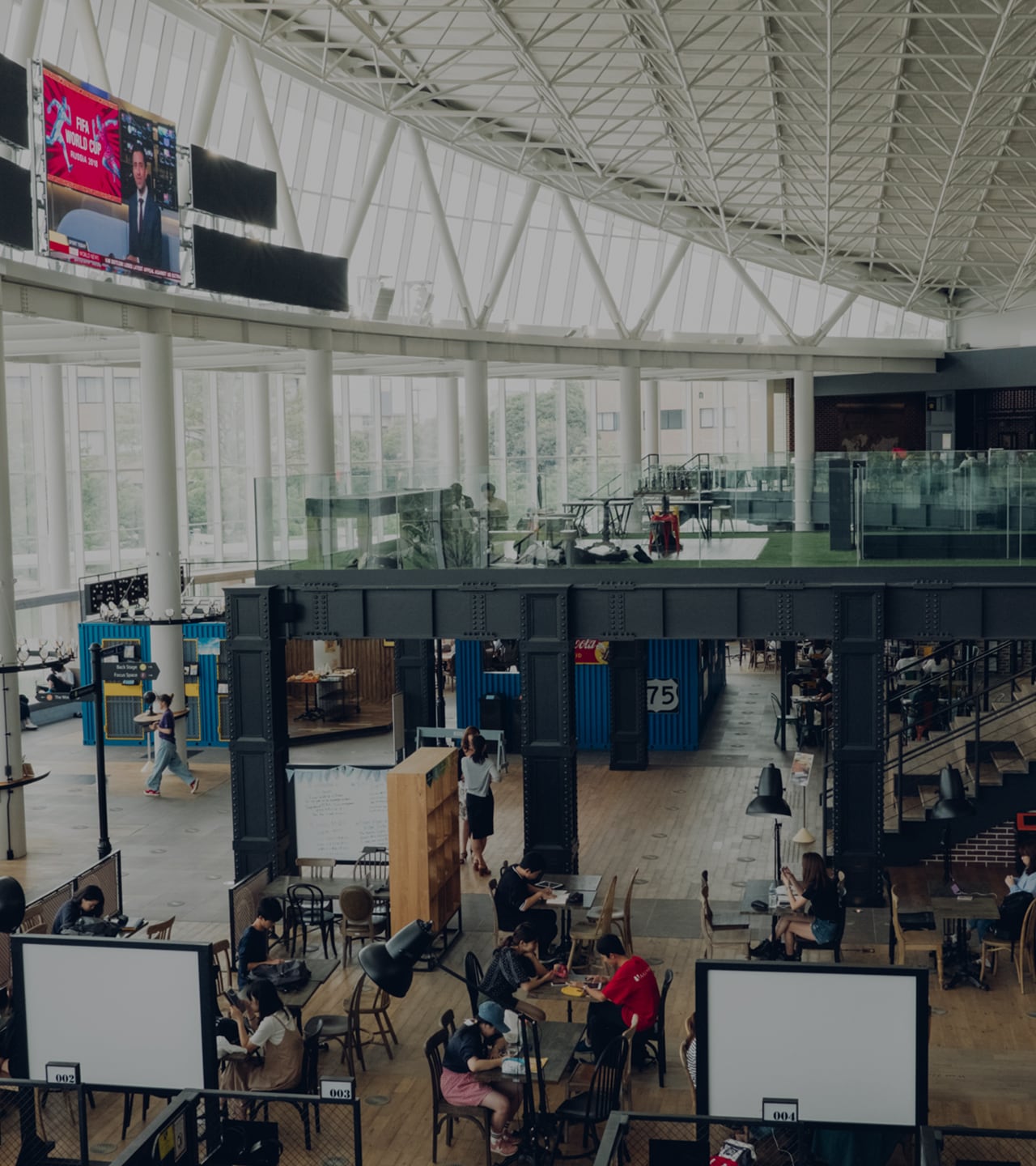
KUIS 8 is a new symbol for the university.
The space is becoming a hub of activity for our school.
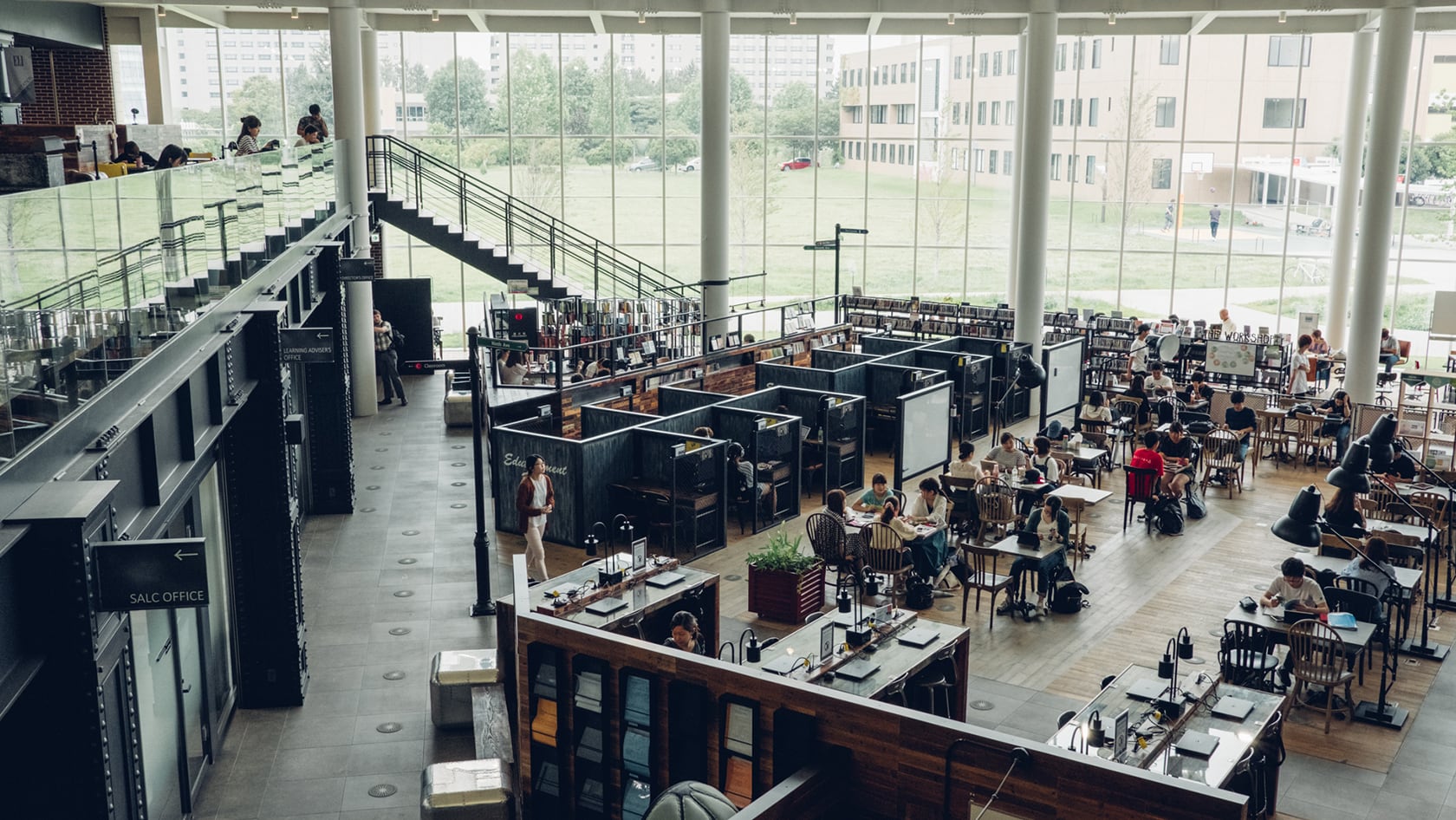
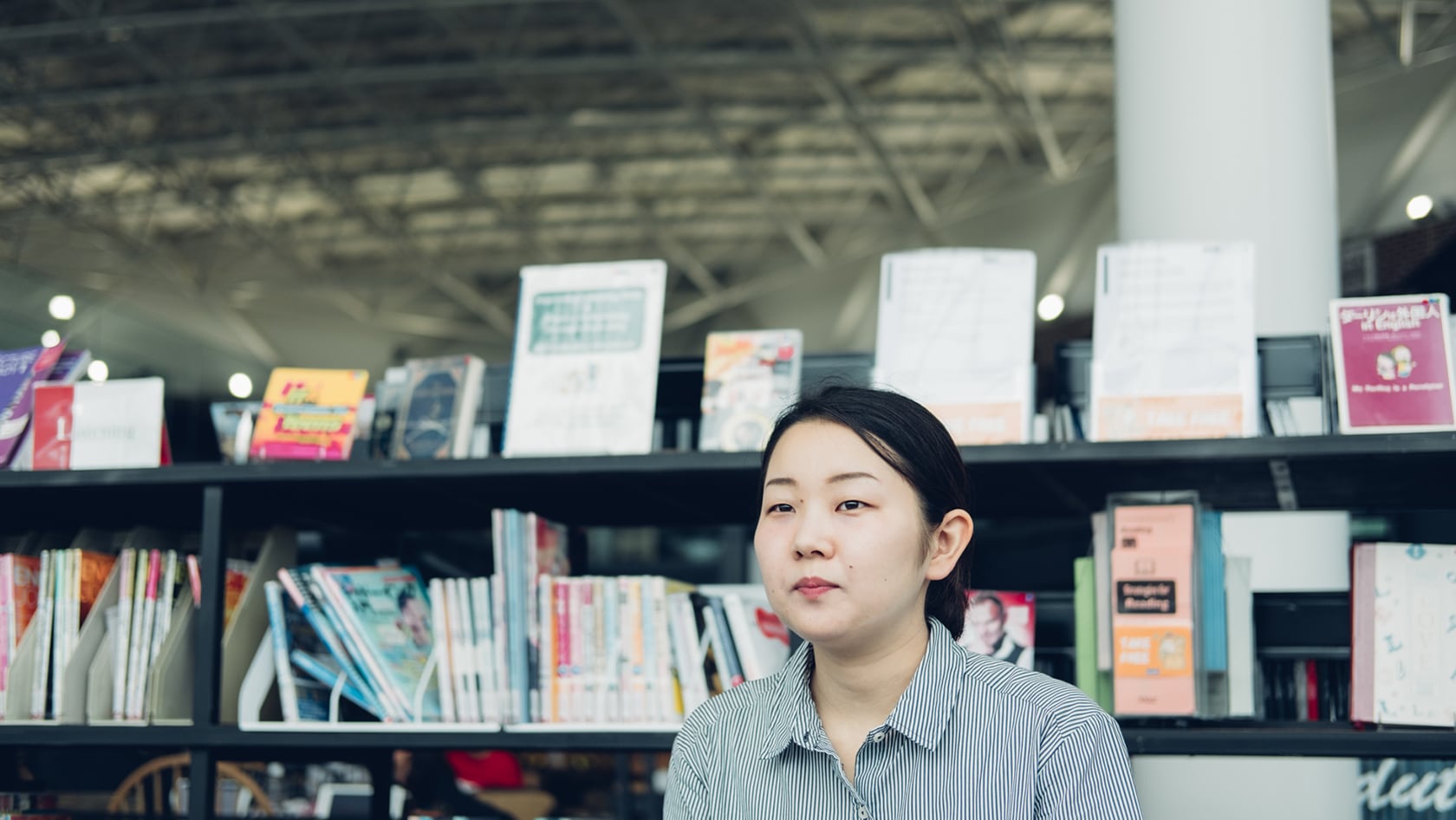
Simply visiting four times a week increased my TOEFL score by seventy points over the course of a year.
Places styled like a library can be good for intensive study, but I find it easier to focus in an area with a bit of background noise. Here, I can meet people who are similarly interested in improving their English. Being able to study with them helps keep your motivation up.
It goes without saying that since I started coming here, I use English much more frequently. As a result, my TOEFL score has increased by seventy points over the last year. My current goal is to pass level one of the Eiken Test in Practical English Proficiency. I plan to achieve this within a year.
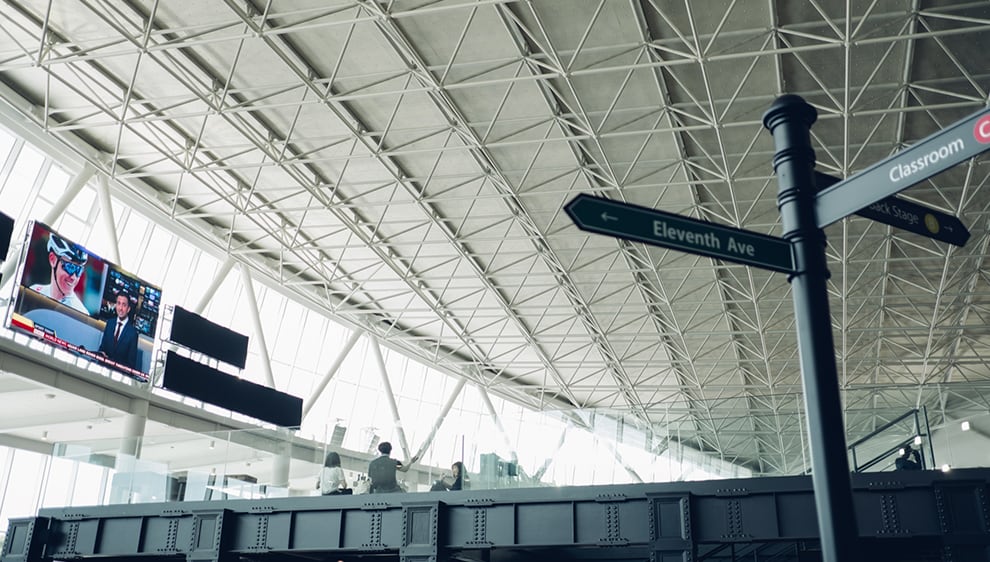
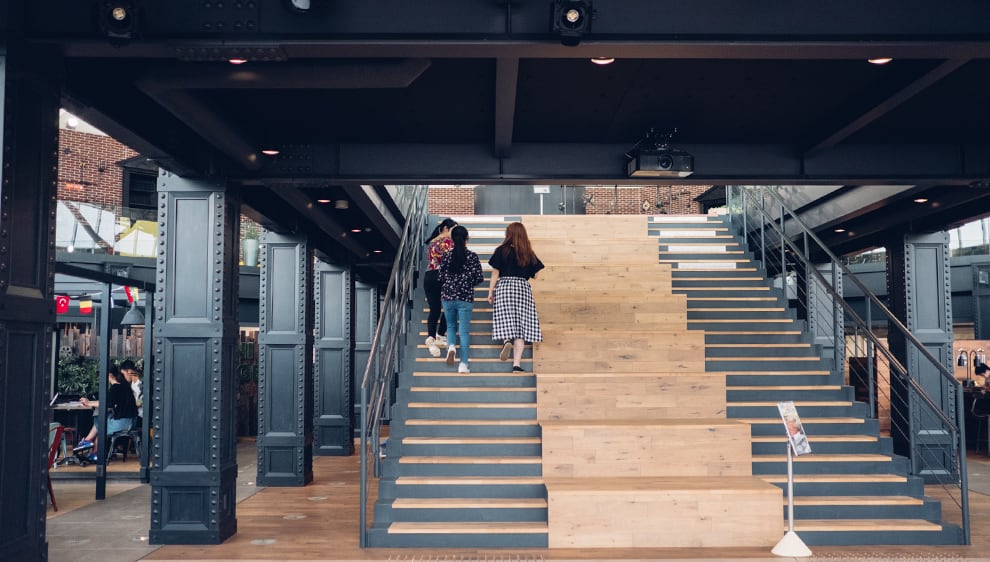
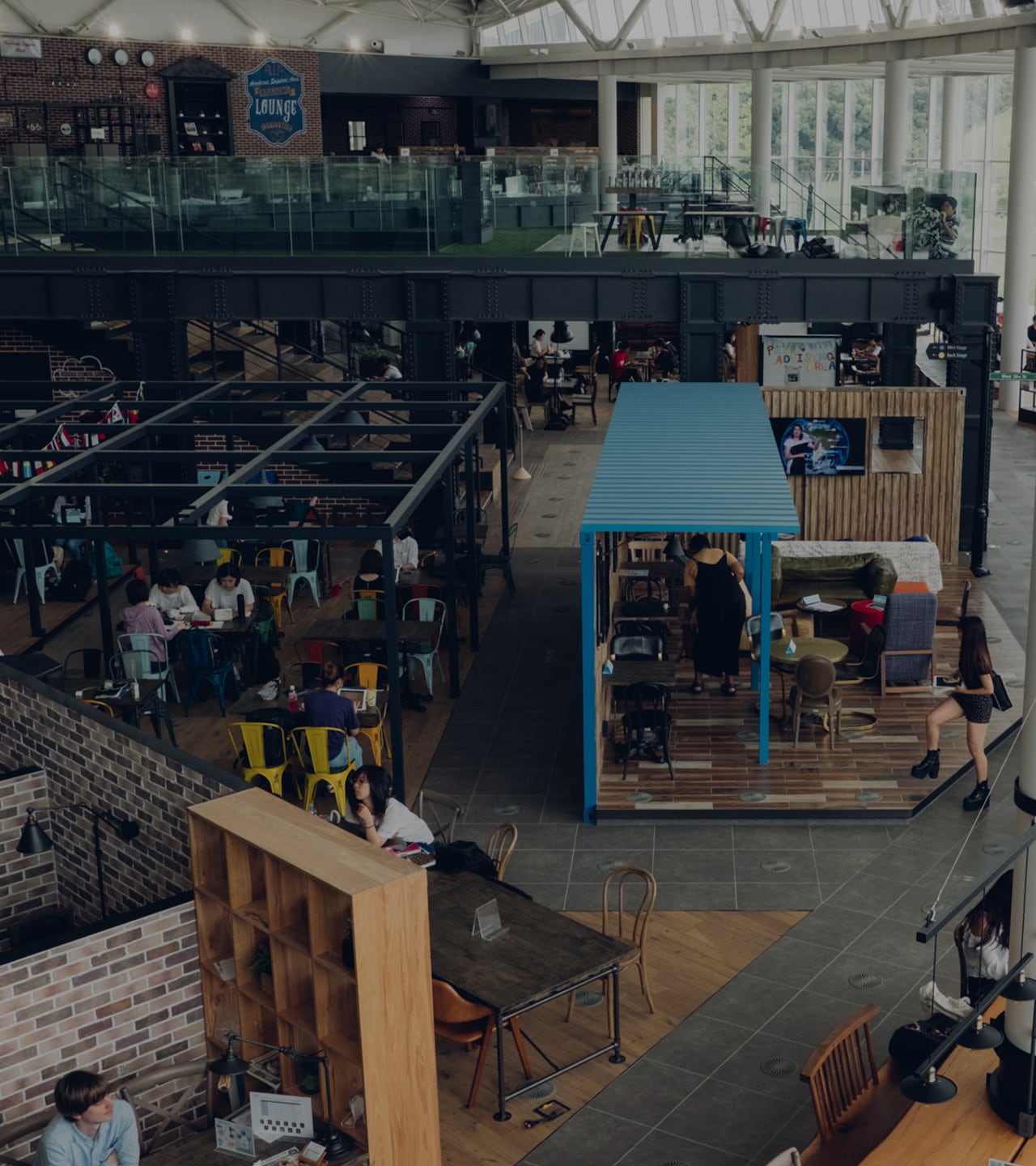
Encouraging students to teach each other
The space is driving the creation of a new learning community.
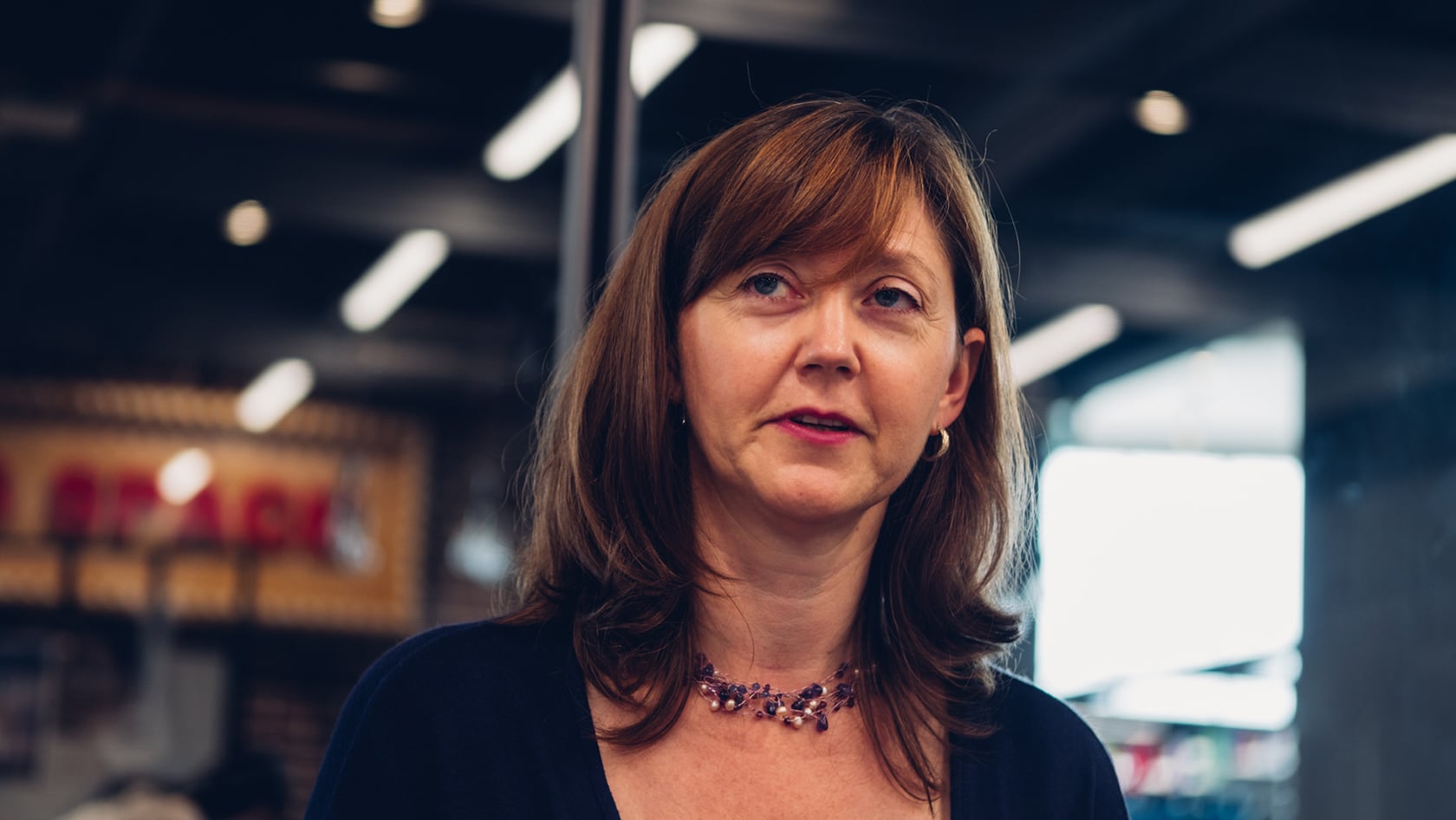
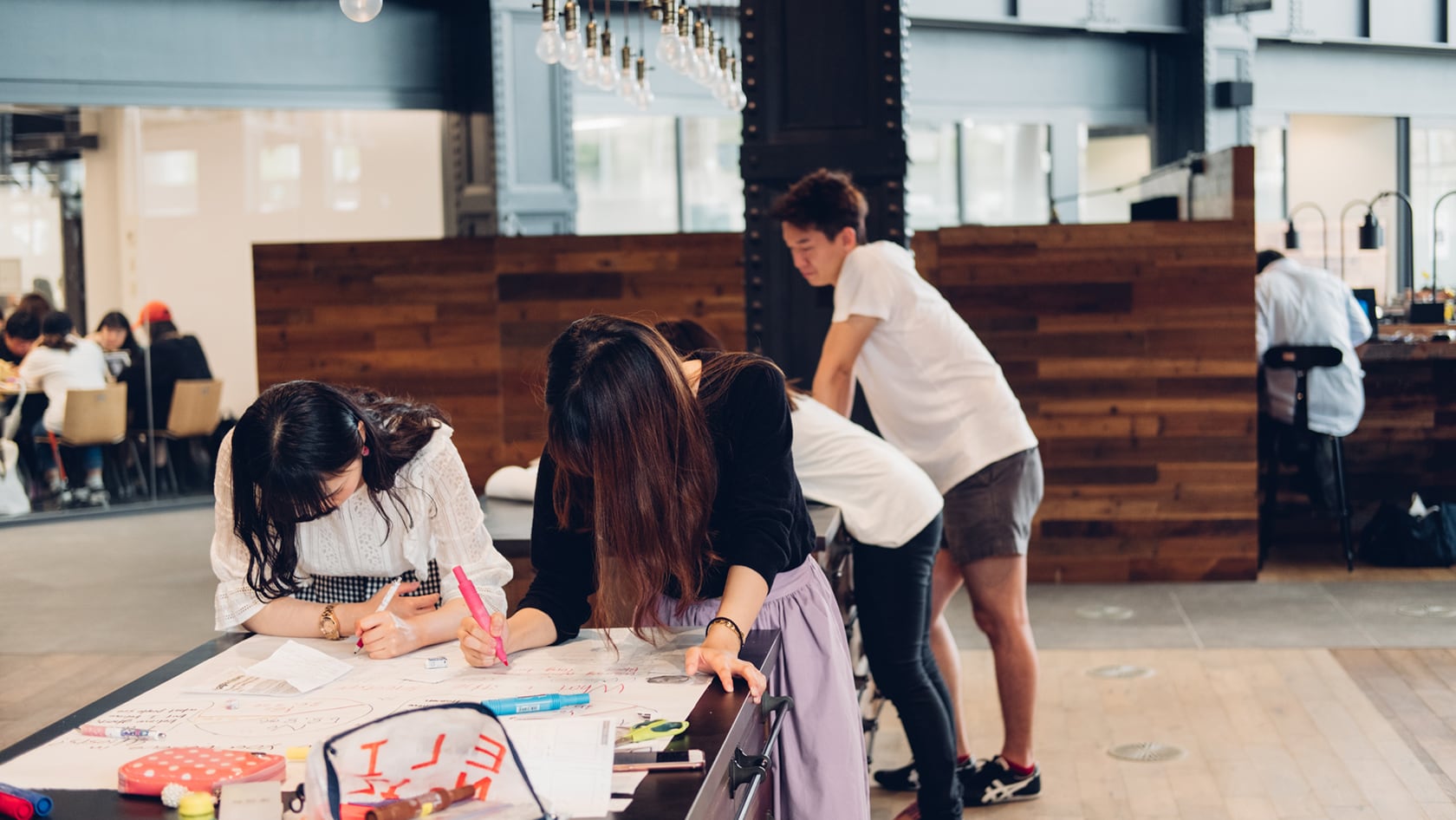
Natural, everyday activity fosters conversation
KUIS 8, at which over 1,000 students engage in self-guided study each day, is a social learning community. Not only are there workshops held by faculty and learning advisors, but there are also language learning events led by students — all of this on a daily basis. At SALC, while we did have workshops and events, KUIS 8 now has more spaces tailored to different sorts of programming, which is leading to a surge in students pursuing their own style of study.
Some people learn English by watching foreign films, others do a bit of research before class, while still others chat with each other in English. Students are all engaging with the subject in their own way. Since the space has a bit of everything — from study desks, to a cafeteria, to a lounge, to event spaces — there is no inherent rule that you have to study silently. In point of fact, the goal was to create a bit of background noise, such as you would find out and about in town, in order to break the ice and get people talking.
This is one of the few learning commons of this scale in Japan.
Meanwhile, students can use the advising spaces if they need to have a private consultation with an advisor. In this way, there are spaces suited to all styles of learning and study. At the end of the day, this space is all about students. It comes down to how they want to make use of the space, and KUIS 8 is here and equipped to adapt to that. We have created here a learning commons on a scale that is almost unheard of worldwide. It has greatly changed students’ attitude to learning. Above all, our greatest success is that more students are now actively engaged in self-directed study.
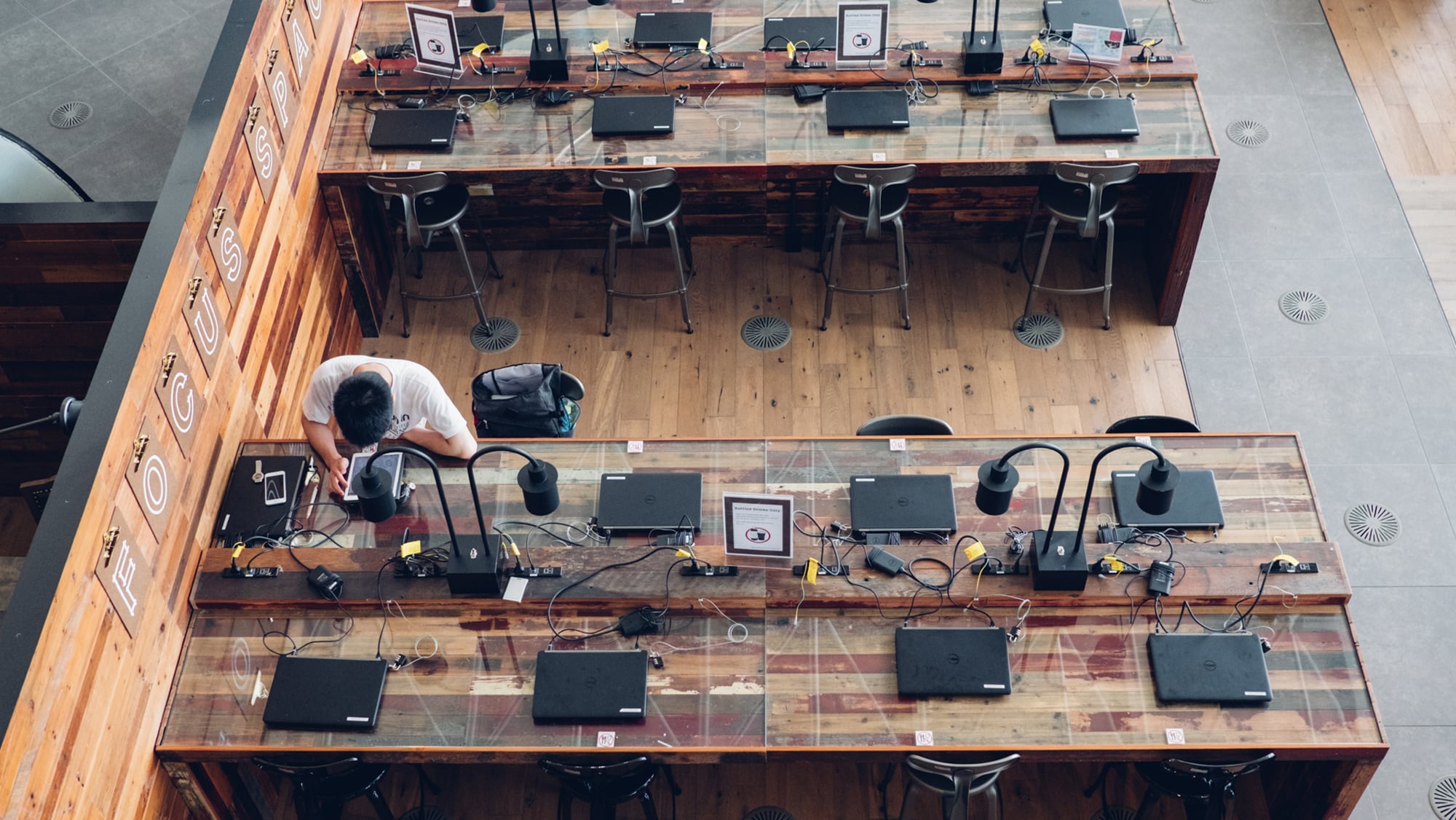
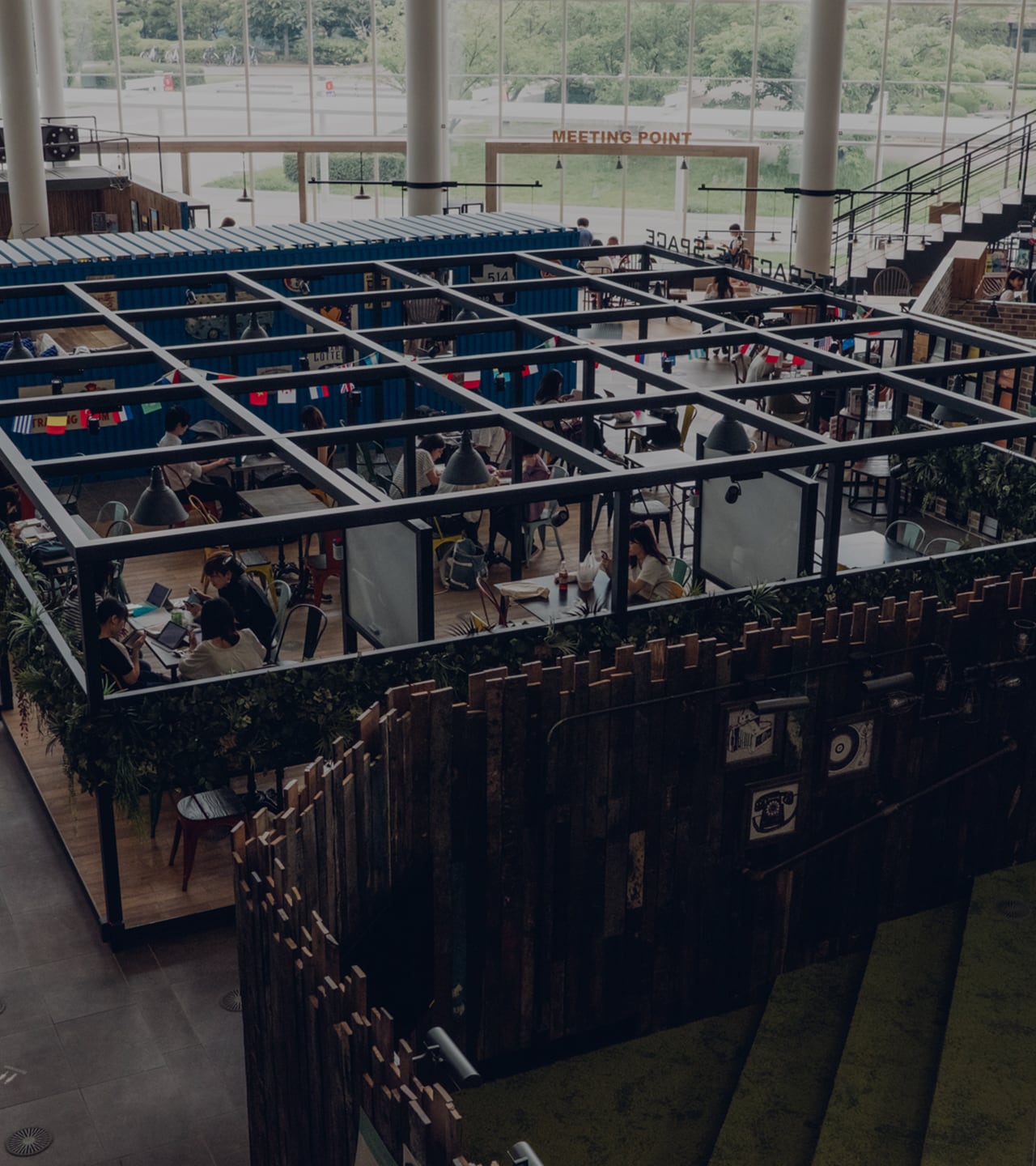
A truly memorable campus is the pièce de résistance in a lasting educational experience.
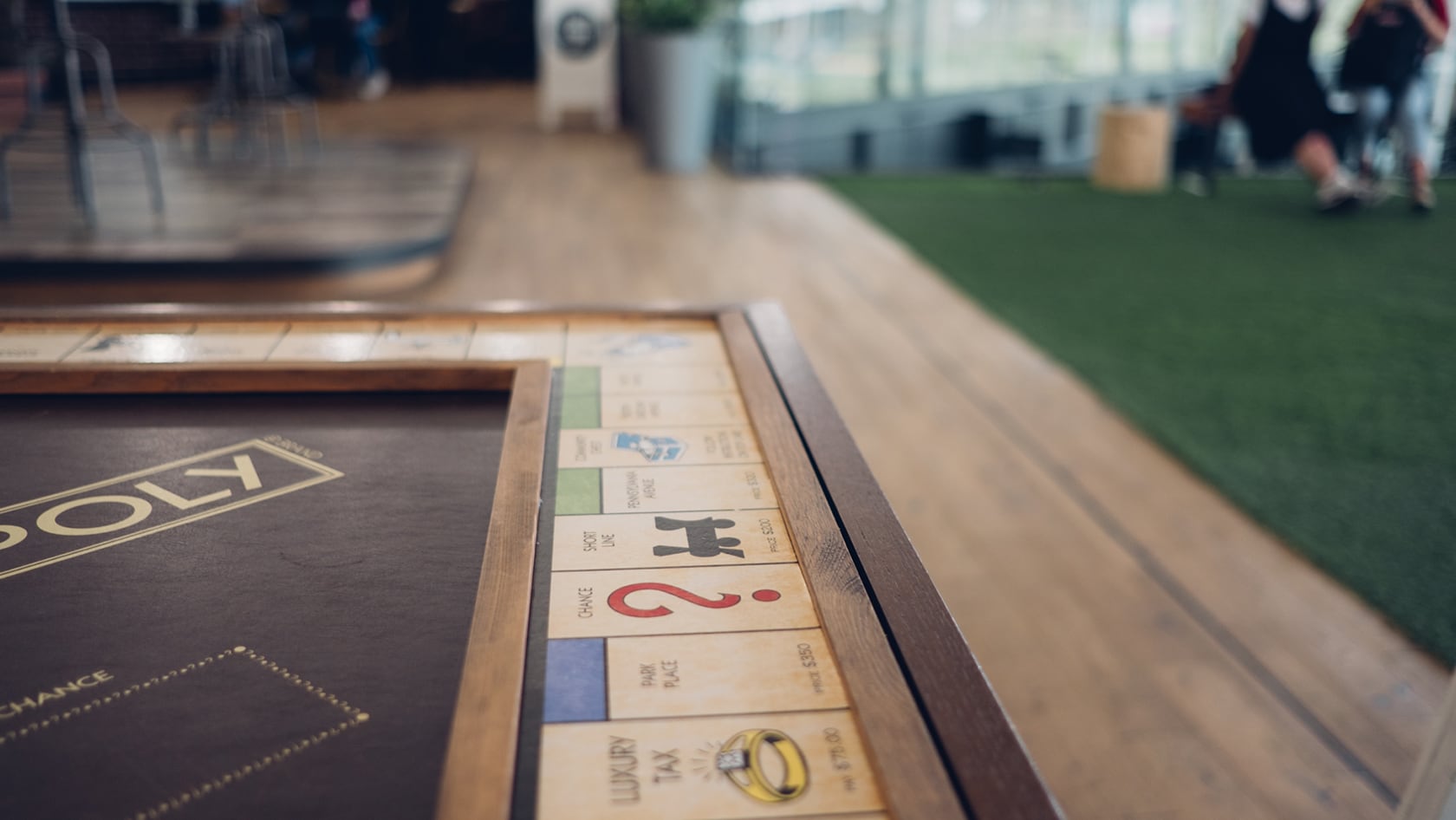
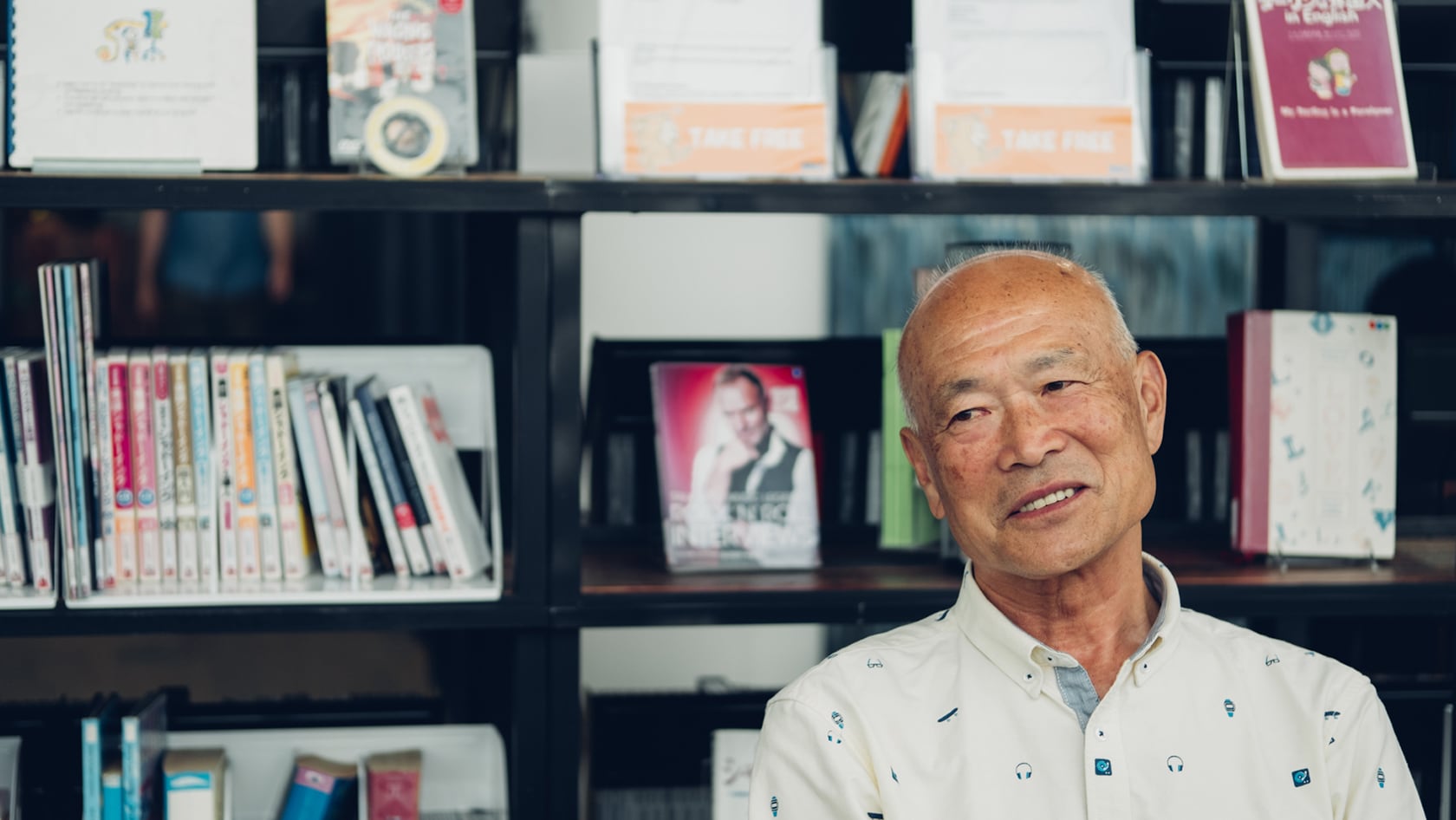
Making this a campus where parents can send their children to with confidence.
As one of the people in charge of commissioning this project, foremost in my mind was creating an appealing campus that parents would feel proud to send their children to. The best talent develops in the best environment. In turn, the best environment draws the best talent. That was something I had in mind in the planning stages.
In fact, many parents who wind up sending their children here tell us that KUIS 7 and KUIS 8 left a lasting impression on them. Some people may think that a building needs only to have an entrance and exit, and that’s that. But we don’t feel that way at all. Outstanding architecture lasts forever, and students will take care and pride in looking after it and using it well. By extension, people who pay care to the things around them will in turn grow up into conscientious people.
The building has drawn a lot of attention, not just in the education sector, but from other industries.
More schools are now considering planning facilities like KUIS 8, or that would surpass KUIS 8. We also have many visitors from the financial and other sectors who take an interest. Still, while they may use KUIS 8 as a reference, I don’t think others will ever be able to replicate our unique approach.
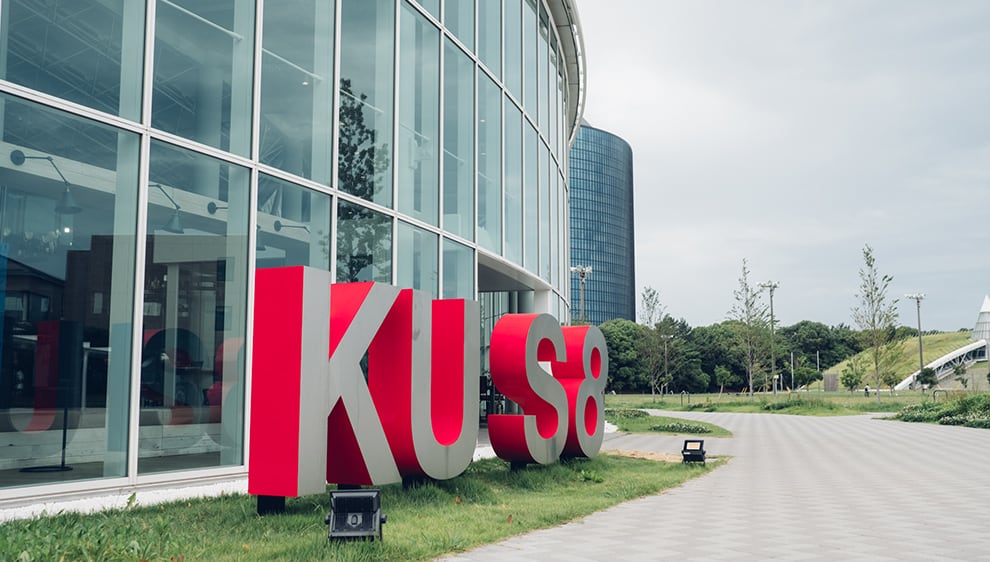
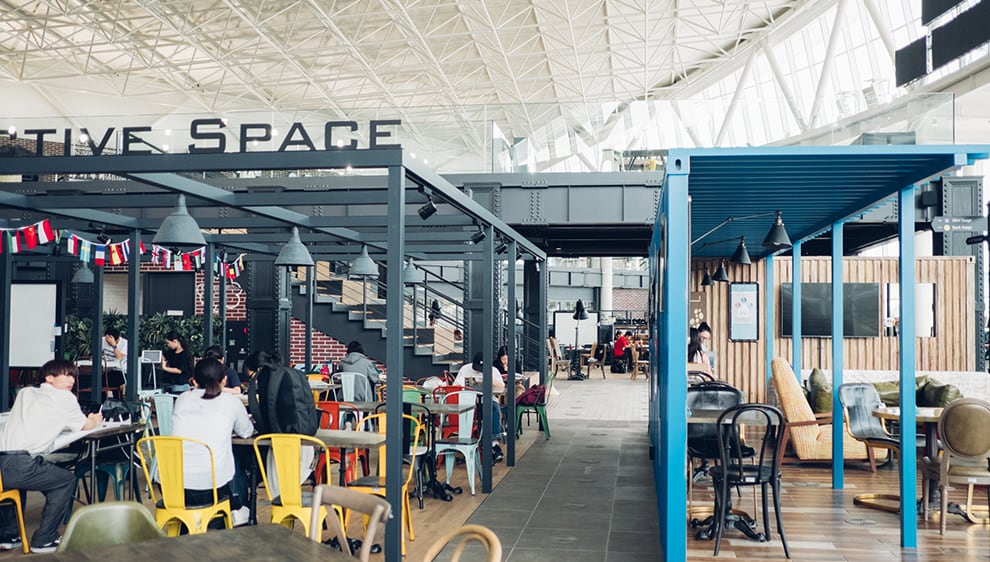
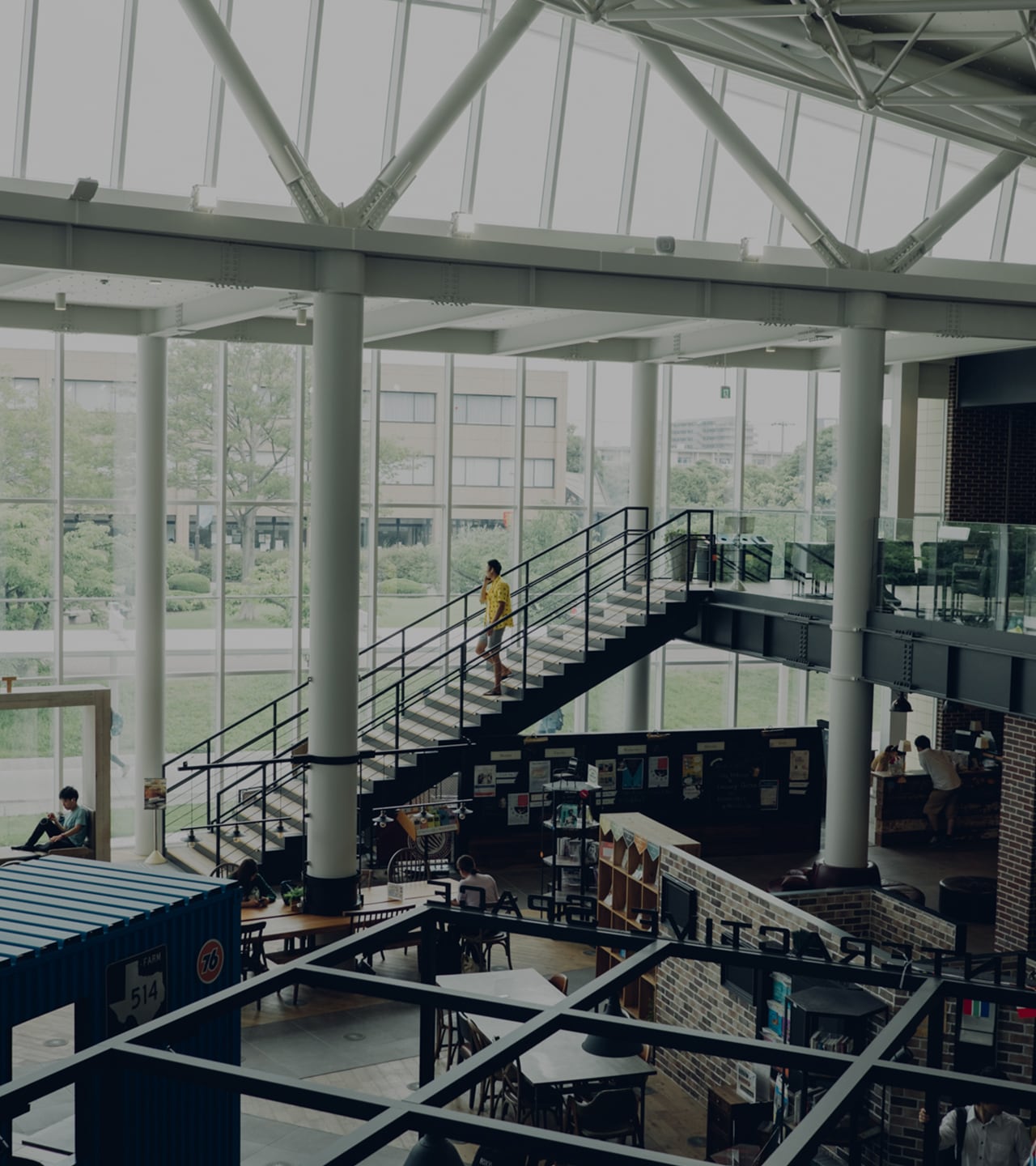
Bringing the intellectual stimulation of a thriving community into the campus.
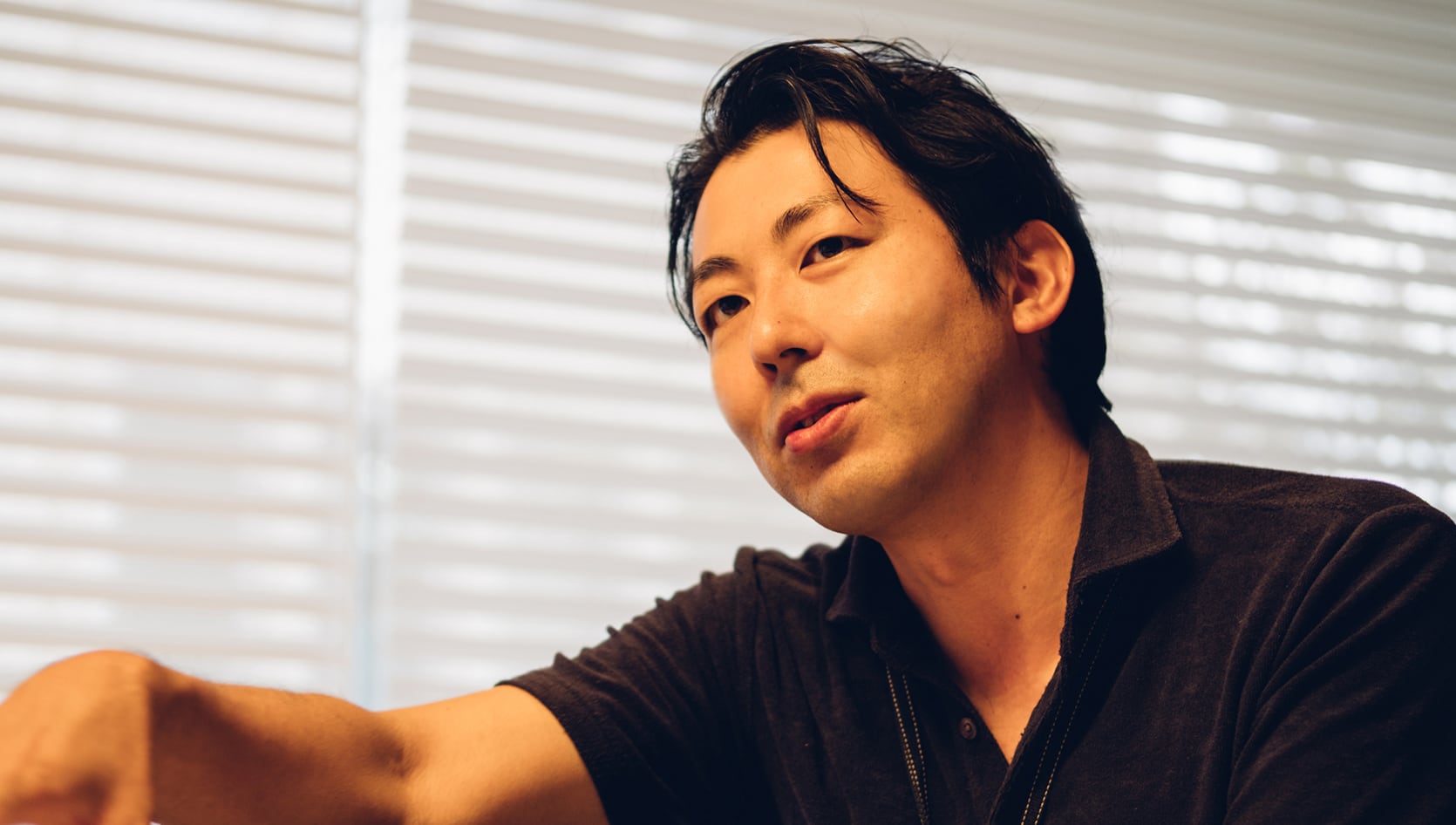
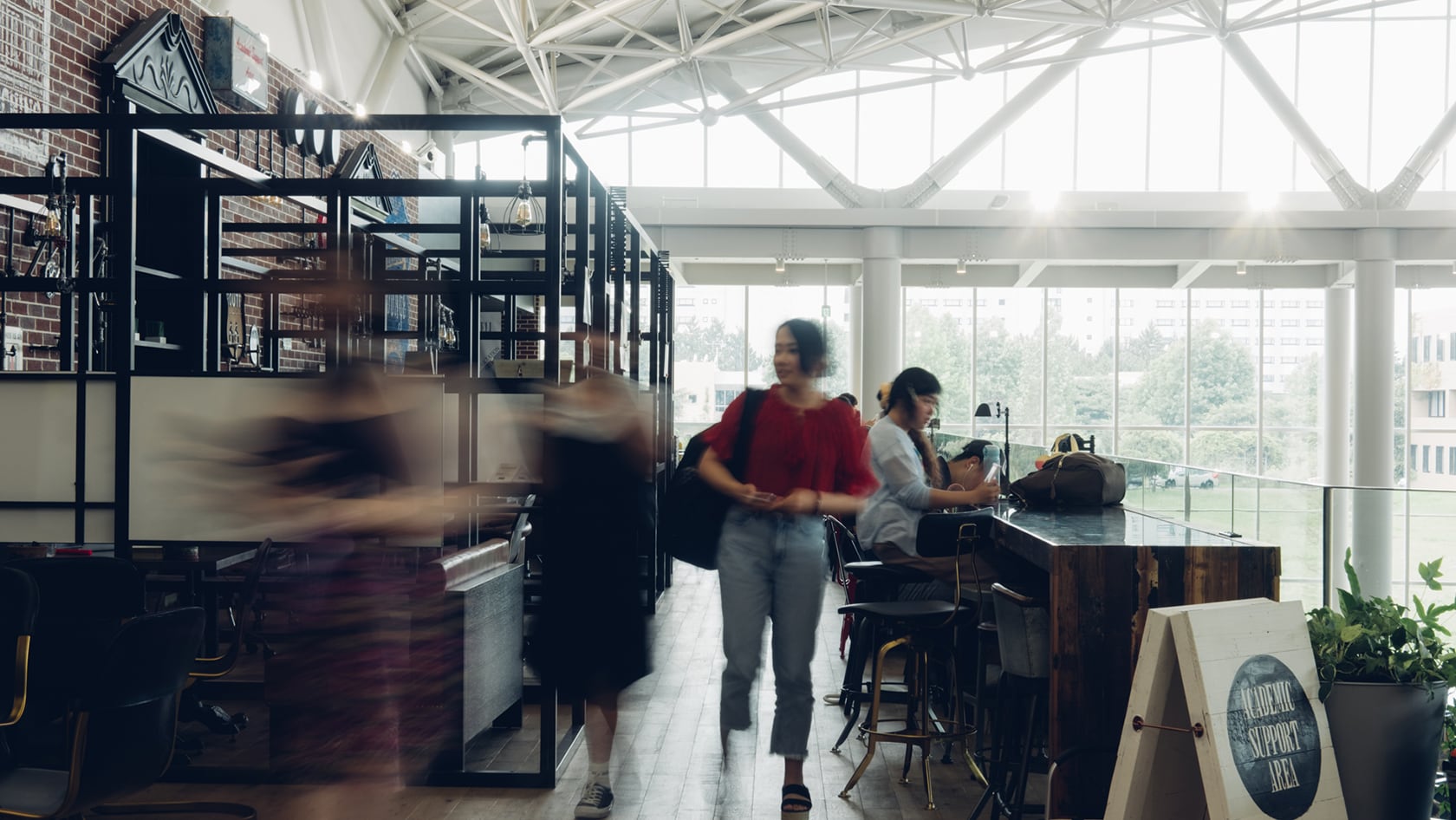
We debated the matter with the university for over two years.
SALC has become synonymous with the Kanda University of International Studies today. This facility for self-guided learning has become so well-regarded that other universities have adopted the idea. Seeking to promote its cutting-edge position in this area, the university approached us with a new project for a “learning commons” that would be in a league of its own, which was the genesis for this project.
Our architect of design and engineering team met with them for regular meetings for a period of two years. Through that process, the concept gradually gelled into a place where students can obtain the support of faculty while pursuing self-study in English. Furthermore, it had to feel lively and vital, like going downtown to meet with friends, and incorporate elements to stimulate students in a more active approach to English. We therefore set out to take the three-pronged cycles of study, praxis/presentation, and support from faculty and drive that back into the facility by imbuing it with three core functions.
Creating a lively space under one roof that makes studying more inviting.
As mentioned, the space had to feel convivial and down-to-earth — a place to study indoors, yet feel like a commons. Looked at from the center, the leftmost area is designed as the “space of stillness,” while the rightmost area is designed as the “space of activity.” The former offers study spaces for the solo student or small groups, while the latter has a cafe and larger workspaces, as well as a presentation area to foster learning through active discussion. The subtly partitioned spaces allow students to select the best place for them depending on what they intend to study, and with whom. This design fosters the creation of a more resilient learning community.
The interior design, drawing hints from the appearance of a local downtown, varies slightly from space to space. While the building itself will remain in use for several dozens of years to come, at least, the academic and study programs are likely to evolve and change, so the interior is perforce designed to change with students. What persists is the aesthetic of being in a convivial town and the use of an atrium space that stimulates the senses. In order to make the space feel connected with the outside, it features a fully glass facade, with a large, pillarless roof 60 meter wide, resembling the sky itself. The design abides by the notion of studying English in situ, or in the context of a town in which chance encounters are made.
While the interior will adapt over time, the “town” ambiance persists.
The lighting was also designed to suggest a downtown aesthetic. The eaves of the building reflect sunlight in order to brighten the ceiling and illuminate the space. This allows the ceiling to offer diffused indirect lighting and a simulated indirect light effect. Since the light is identical in structure to sunlight, the interior design can still be changed while maintaining that feeling of being out-of-doors.
The interior of the building may change in surprising and unexpected ways in the future. Popular zones will remain popular, while those less favored may change form. This was something we intended since the planning stage. I am personally looking forward to seeing how it changes. That is why we ensured that the lighting, air conditioning, and acoustics are a constant, so that even as the interior decor may change, the structure is everlasting. That was a key theme for this project.
